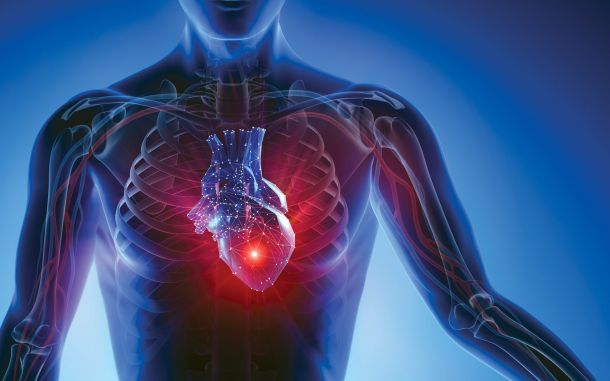Science Square (Issue 144)

In This Article
-
New research showed that climate change has been the primary cause of the large wildfires in the western US that destroyed substantial land over the past two decades.
-
ers recently developed the smallest ever human-designed flying machine: a flying computer chip with the size of a sand grain.
-
A recent landmark pilot study showed that artificial intelligence merged with targeted electrical brain stimulation by brain implants can now improve specific human brain functions related to self-control and mental flexibility.
Climate change is the main cause of fires
Zhuang et al. Quantifying contributions of natural variability and anthropogenic forcings on increased fire weather risk over the western United States. Proceedings of the National Academy of Sciences. November 2021
New research showed that climate change has been the primary cause of the large wildfires in the western US that destroyed substantial land over the past two decades. Between 2001 and 2018, the size of the land destroyed every year is 13,500 square kilometers, which is twice as much as between 1984-2000. How much of this massive increase was caused by human-induced climate change and how much could be explained by natural atmospheric and climate variation have been an intensive debate. To address this major question, scientists specifically focused on the factors that control “vapor pressure deficit” (VPD), which measures the amount of moisture the air can hold when it is saturated minus the amount of moisture in the air. The greater the deficit, the more water is drawn into air from soil and plants which ultimately dry out and become conductive to fires. Strikingly, analyses of VPD data between 1979-2020 showed that 68% of the increase in VPD is due to global warming. The natural atmospheric variations were only responsible for the remaining 32% increase. These findings suggest that the western United States have passed a critical threshold in which human-induced climate warming now plays a greater role for the increase of vapor pressure deficit than natural variations in atmospheric circulation. This also shows that the effects of climate change are accelerating faster than society is equipped to deal with. And most of this rapid change seemed to have occurred since the beginning of the 21st century, much earlier than everyone anticipated. Greenhouse gases generated by human activity, primarily fossil fuel use, has already warmed our planet about 1.1 C° since the pre-industrial era. Global warming will likely continue to intensify conditions that dry out the landscape. This means, unfortunately, a higher risk of more severe fire conditions in the US and the rest of the world.
Eco-friendly flying microchips
Kim et al. Three-dimensional electronic microfliers inspired by wind-dispersed seeds. Nature. September 2021.
Engineers recently developed the smallest ever human-designed flying machine: a flying computer chip with the size of a sand grain. The main goal of the project was to develop miniaturized electronic devices to sense the environment for contamination monitoring, population surveillance or disease tracking. The team first analyzed the aerodynamics of wind-dispersed seeds of tristellateia plant and tried to understand how air flows around these microfliers. It is common for engineers to copy elements of nature to produce objects that behave in certain ways within certain environments, a concept called “biomimicry.” Tristellateia seeds have bladed wings that catch the wind to fall with a slow and rotating spin. By studying tristellateia seeds, engineers unravel the ideal structures for slow and controlled flight, which would provide the microfliers disperse over a broad area and stay in the air for a long time to better monitor the air. The microfliers consist of two major parts: millimeter-sized electronic functional components and their wings. As the microflyer falls through the air, its wings interact with the air to generate a slow, stable rotational motion. The engineers can now integrate a variety of electronics into these microchips, including circuits to detect airborne particles, sensors to monitor water quality, light detectors to measure sunlight, electronics to harvest and store energy from light, a CPU and memory, and an antenna to wirelessly transfer data to a smartphone, tablet, or computer. These miniature devices can generate massive amounts of data, but also massive amounts of garbage. Thus, the team aims to produce an environment-friendly dissolvable microlfyer. To this end, they have already started to use degradable polymers, compostable conductors and dissolvable integrated circuit chips that would naturally vanish into environmentally benign end products when exposed to water.
Targeted brain stimulation to treat mental illness
Basu et al. Closed-loop enhancement and neural decoding of cognitive control in humans. Nature Biomedical Engineering. November 2021.
A recent landmark pilot study showed that artificial intelligence merged with targeted electrical brain stimulation by brain implants can now improve specific human brain functions related to self-control and mental flexibility. Strikingly, brain implants in this new method were able to successfully sense the electrical biomarkers of cognitive deficits and respond by stimulating specific brain regions. For the study, researchers recruited 12 subjects who are undergoing brain surgery for epilepsy, in which hundreds of tiny electrodes are placed throughout the brain to record its activity and pinpoint where seizures originate. Researchers then used all this data to identify unique areas of the brain called the “internal capsule” that they believe is responsible for cognitive control. The internal capsule is thought to involve in the process of transitioning from one thought pattern or behavior to another, which is impaired in most mental illnesses. In an example of depression case, affected person typically can’t get out of a “negative thought.” An integrated machine learning algorithm also helped the team isolate the patients’ control abilities from their brain activity and their actions. At the end, the system was able to read brain activity, decode from that when a patient is having difficulty and apply a small burst of electrical stimulation to the brain to boost them past that difficulty. Researchers think this system is a lot like an electric bike. When someone is pedaling but having difficulty, the bike senses it and augments it. They have basically made the equivalent of that for human mental function. Some of the patients in the study had significant anxiety in addition to their epilepsy. When given the cognitive-enhancing stimulation, they reported that their anxiety got better, because they were more able to shift their thoughts away from their distress and focus on what they wanted. This method offers a whole new approach in treating mental illness where most interventions are typically developed to suppress symptoms. But now the new method can provide patients a tool that allows them take control of their own minds. The team is almost ready for clinical trials. Since improving cognitive control by deep brain stimulation is already approved by the FDA, translation of this care to current medical practice could be relatively faster.









